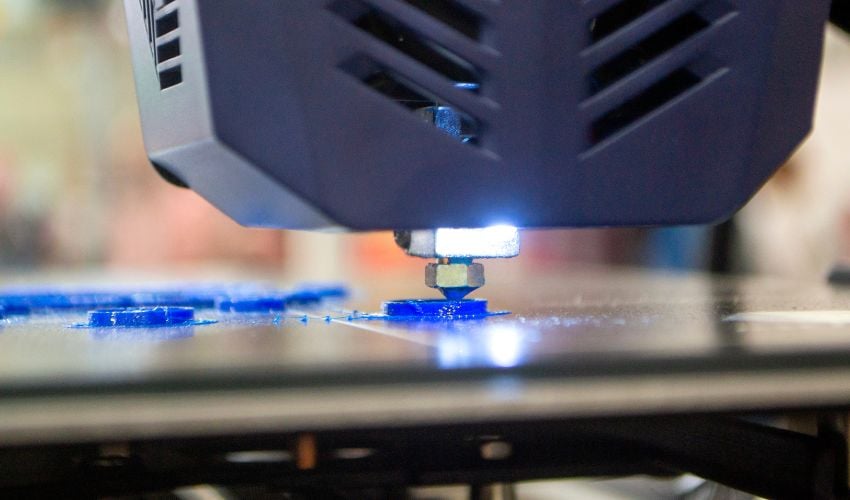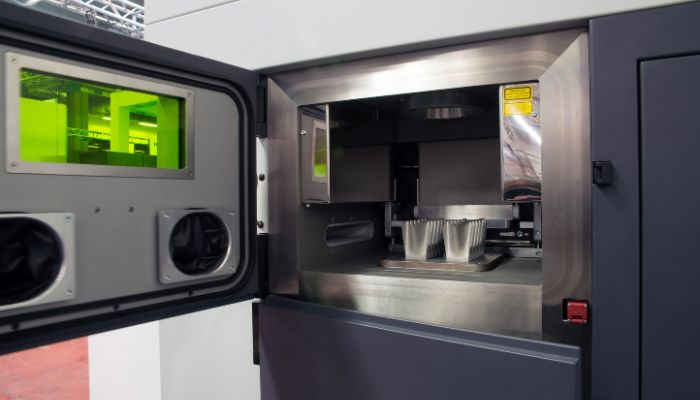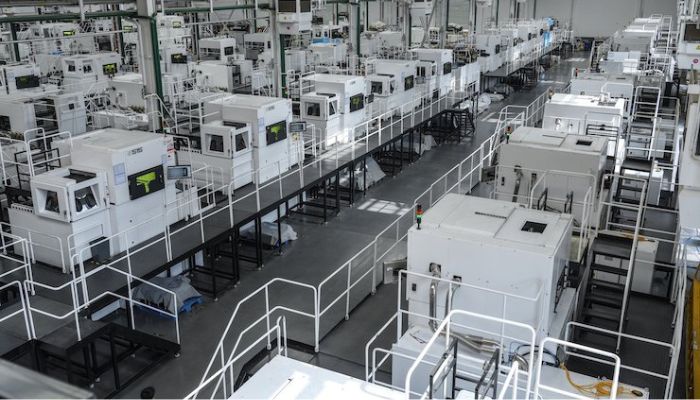#3DOpinion | Is There Hope for the Additive Manufacturing Market in 2025?

To a certain extent, doom and gloom characterized the additive manufacturing industry over the course of 2024. Between firings, bankruptcies, failed mergers and more, no one was feeling particularly optimistic about the 3D printing market. But could that be changing for additive manufacturing in 2025?
We already saw it at the end of last year: at Formnext there seemed to a brightness that had been missing in the previous year’s edition as many spoke about opportunities for additive manufacturing. Personally, I remain skeptical, if only because we have seen what happens when a bubble bursts and we have still seen our fair share of turbulence this year, something that is likely to continue in 2025. But it is also undeniable that there are signs of hope.
But what is actually the current state of the additive manufacturing sector? Let’s take a closer look.
Reasons for Hope for Additive Manufacturing in 2025
When I wrote my first #3DOpinion last year, my message was mixed: no, the situation was not as bad as people thought, but there has been a clear move that shows a slow down of the market. 2025, however, has shown some more promise, even if news has been a mixed bag, both positive and negative, since January.
One of the clearest signs of this comes from a report from CONTEXT released at the beginning of the year. This notably outlined the pessimistic results from 2024. Notably, when it comes to with industrial solutions, both metal and polymer, where there was a decrease in sales of around 25% in Q3 as compared to the previous year. In fact, even in areas where previously there had been some success, including for desktop solutions, there was an overall drop including in China, previously driving a significant amount of growth.

The fate of industrial 3D printing has been in the mind of many after a weaker 2024
Still, the report ended on a positive note, predicting full-year growth of 14% in industrial 3D printer system shipments, 12% in midrange shipments and 6% for professional. This is expected to continue as well to double-digit growth in 2026. Certainly a relief for many in the industry.
This hope was also buoyed by some other good news from early February: Stratasys announced that it will be receiving an investment of $120 million from Fortissimo through the acquisition of approximately 14% of its issued and outstanding ordinary shares.
Although one of the biggest companies in 3D printing, Stratasys had some trouble over the past year. Who hadn’t heard about the layoffs in the company or its failed merger with Desktop Metal? And who can deny the anxiety that it caused throughout the industry? If one of the biggest among us could fail, what does that mean for the rest?
This news from Stratasys and Fortissimo is more than promising. It shows the interest that is still present not just in Stratasys but in additive manufacturing as a whole. It also goes a way to alleviate fears brought about by the success of companies like Bambu Labs, which seemed to suggest that industrial 3D printing would be less valued.

Stratasys has bounced back with a significant investment (photo credits: Stratasys)
That being said, that does not mean all is rosy. There have been reports in China at least that there was less investment in 3D printing, a drop of about 50%. This could be a sign of a tapering off of interest from a trendy topic, soon to be replaced. Another worrying sign from the country, Bambu Lab, the rising star, has been embroiled in some controversy of late.
It seems the company has fallen victim to the looser patent laws in China, already a bane for many Western 3D printing companies. However, in tightening its own protections, it has alienated the maker community that has helped it rise. Furthermore, copy cats of its products are arriving on the market which many are more than willing to snap up, arguing that convenience and low price while maintaining innovation is worth the most.
At the same time, elsewhere in the world, we have seen investment into companies like American Sintavia and Japanese Interstellar Tech. Universities, too, continue to show interest in AM and American financial services firm Cantor Fitzgerald conveyed a “cautious but optimistic” outlook for the additive manufacturing sector. Materialise in particular was pointed to in the report for its resilience and 35% trading gain over six months.
These are signs of durability for the market, even if only small ones. Still, those steps can be more powerful than large leaps that do not have a safe place to land, if you’ll forgive a cheesy metaphor.
The Threat of Tariff Wars and a Mercurial United States
An additional factor to consider is that there is a certain amount of global uncertainty caused by economic turbulence as well as a new government in the United States. This in turn could have an overall negative impact on the industry, similar to the one seen in many sectors due to COVID-19.
One of the biggest drivers of this has been the threat of tariffs. President Trump started off February 2025 with an announcement of tariffs on Canada, Mexico and China. This was further aggravated by the US Postal Service announcing that it would stop receiving Chinese packages.
Although this decision was reversed 12 hours later, it had quite a significant impact on the 3D printing community, makers in particular. This is due to the fact that desktop 3D printers from the country have sharply risen in popularity over the past year or so. Therefore, it seemed likely that a long-term ban from the USPS, which delivers mail and packages to 98% of the nation’s population, would have a significant impact on that population. Even the fact that it was reversed cannot be seen as positive, because who knows when something similar may happen again? This administration has shown that it is willing to engage in trade wars if necessary.

Trump’s economic policies have led many to question what will happen to 3D printers coming from China (photo credits: BLT)
Still, this in and of itself cannot be considered a purely bad thing. Certainly the threat of tariff wars could create strain especially on the maker community, but 3D printer companies perhaps also see the way forward. This may be the time for some companies to choose to invest in these affordable desktop solutions, and indeed I’m sure many are. Plus, I imagine that this will also drive Chinese companies to ensure they have proxies in the United States and Europe in case the situation repeats itself.
Not only that, but we have already seen numerous sectors that are still clearly interested in additive manufacturing, especially for more industrialized machines. For instance, after a report in 2024 that estimated that the Department of Defense would increase its spending in additive manufacturing, we have already seen a flurry of reports from the American military sector.
This has also been reflected more broadly in the aerospace sector, as well as in medical innovations. The latter especially, driven by private and government investment, truly seems to be embracing the ability of 3D printing to disrupt traditional medical practices and find new ways to help patients heal. Thus, showing how solutions that are geared towards helping these sectors could be a sensible move forward for some of the companies that have been struggling.
The defense sector has been an avid adopter of additive manufacturing throughout 2024, something that seems likely to repeat in 2025 (photo credits: ICON)
So What’s the Status?
Where does this leave us? It is perhaps a bit of a non-answer to assert “yes and no,” to the question of should we be hopeful in 2025. But overall, it seems that there are bright spots on the horizon for the market. But caution is always prudent, especially as we continue to see the ramifications of overpromising and underdelivering with 3D printing. However, as companies continue to focus more on applications, it seems that we will continue to see growth.
Eyes will continue to be on Asia in terms of investment and it remains to be seen whether the growth of new topics like AI will overshadow additive manufacturing or whether they will work together for a stronger market for both. Personally, I think the latter is likely, although it may take some time. In the meantime, the market should continue to hold steady and perhaps we should all take up the mantra of the tortoise and the hare for our expectations this year.
For 3Dnatives, at the very least, we will be going to Asia for the first time this year. We have seen the impact that Chinese manufacturers are making on the 3D printing landscape and it seems, even with less investment, that this may be the country to watch when it comes to additive manufacturing growth. It will be interesting to see what 2025 brings the wider additive manufacturing sector.
The views and opinions expressed in #3DOpinion are those of the authors and do not necessarily reflect the official policy or position of 3Dnatives. Any content provided by our authors are of their opinion and are not intended to malign any religion, ethnic group, club, organization, company, individual or anyone or anything.
Do you think there is hope for the additive manufacturing market in 2025? Or are you more cautious? Let us know in a comment below or on our LinkedIn, Facebook, and Twitter pages! Don’t forget to sign up for our free weekly Newsletter here, the latest 3D printing news straight to your inbox!








AM technologies are becoming more reliable, faster, and capable of producing higher-quality parts.
The turbulence in China and ongoing global economic uncertainty are certainly challenges, but the signs of resilience—especially in midrange and professional segments—suggest that the sector may be stabilizing and poised for sustainable growth.
I think the latter is likely, although it may take some time
In head basketball, players can choose from a variety of fun and unique characters, each adding a special twist to the gameplay.
With these positive factors, it can be said that the additive manufacturing market will continue to grow strongly in 2025 and in the following years.
Insightful analysis! Your balanced view captures both challenges and promising signs in additive manufacturing for 2025. The emphasis on cautious optimism and industry resilience is encouraging. Looking forward to seeing how innovation and investment shape the market’s future. Great read!
Wow… this post is excellent.
thanks for you sharing!
good post! thank you!
This is the awesome post.
Insightful analysis. The pivot from “over-promising” to “practical applications” is crucial. Now, late in 2025, we clearly see that companies focused on vertical markets are indeed proving to be more resilient, confirming this cautious optimism.
The predicted 14% growth sounds good, but given the low base in 2024, how much does that truly reflect a real market recovery? I hope this isn’t just another capital narrative, but solid industrial upgrading.
Great post! I really enjoyed reading it. Keep sharing such articles.